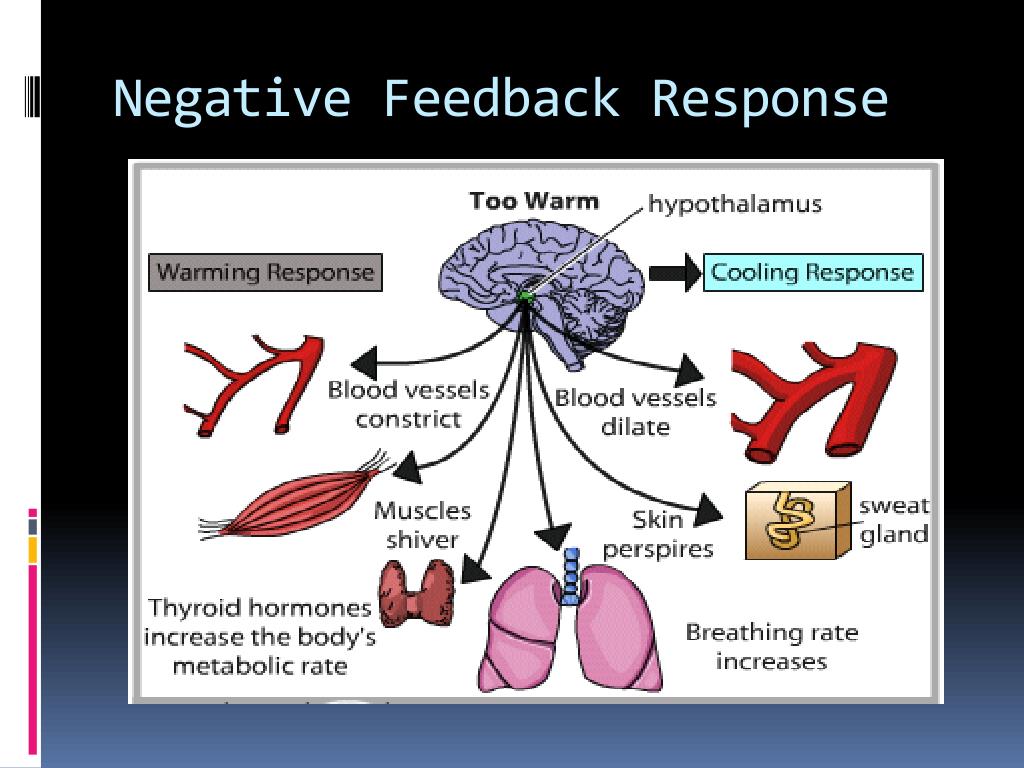

They send off a message to the integrating center in your brain. When your blood pressure goes up or down, the receptor cells in the walls of your blood vessels can detect the changes. When you do something that changes blood pressure, such asstanding up, lying down, doing exercise, or rest, these stimulates are either a raise in blood pressure or a decrease. In Figure 2, you can see the variables in the feedback loop for blood pressure. The blood pressure feedback loop has a few more components than depicted above. How Does Negative Feedback Loop Regulate Blood Pressure? This helps more glucose get absorbed into the cells and brings the blood sugar levels down. If your blood sugar goes too high, a signal is sent to the pancreas to release more insulin to lower the blood sugar levels. If your blood sugar goes too low, the negative feedback loop signals the liver to release glucagon and signals the pancreas to slow the production of insulin. This means that they are the starting point for all the other body systems. Negative feedback loops in the body are very stable and in themselves maintain constant conditions. They are either electrical impulses or chemicals that can stabilize the body and maintain homeostasis. It receives messages from the sensors and decides which effector needs a signal to go out and fix the issue in the body. They sense changes in your body and send a message to the integrating center. First is a sensor, next is the integrating center, and then the effector (Figure 1). The negative feedback loop requires a few things to work to maintain homeostasis. Let’s take a look at how the feedback loop works. The loop stays where it is at and sends out different “effectors” to do the work. The negative feedback loop helps to balance homeostasis by recognizing there is a problem in the body and sending out the right response. All of these responses to change the body start in the brain and gets sent out via chemicals or electrical messengers. For example, when you get cold, you shiver to bring up your temperature.
Negative feedback loop homeostasis series#
The body then goes through a series of changes to try and bring things back into balance. Homeostasis is disrupted when one of the key parts of the system isn’t working right or something is off.

It means the body temperature is where it needs to be, the heart is beating at the right rhythm, hormones are right, and the blood pressure is in normal range. Homeostasis means all is working in harmony in the body and functioning normally. The blood pressure feedback loop helps the body maintain homeostasis. This article explains how the feedback loop works to maintain blood pressure. If the feedback loop was to malfunction and the blood pressure doesn’t normalize, there is a higher risk for conditions such asstroke, heart attack, or even failure of the kidneys.

Negative feedback loop homeostasis how to#
This happens through a blood pressure feedback loop that tells the body how to maintain your blood pressure where it needs to be. Any mammal that has blood in the body has a blood pressure.īlood pressure is maintained in normal ranges through a process called homeostasis, which sends out chemicals andsignals to either relax or tighten the blood vessels to make blood pressure go up or down when needed. Your blood pressure is how hard your heart has to pump to push the blood through your blood vessels and through your body. In order to understand the blood pressure feedback loop, it is important to first understand what blood pressure is and what it does.


 0 kommentar(er)
0 kommentar(er)
